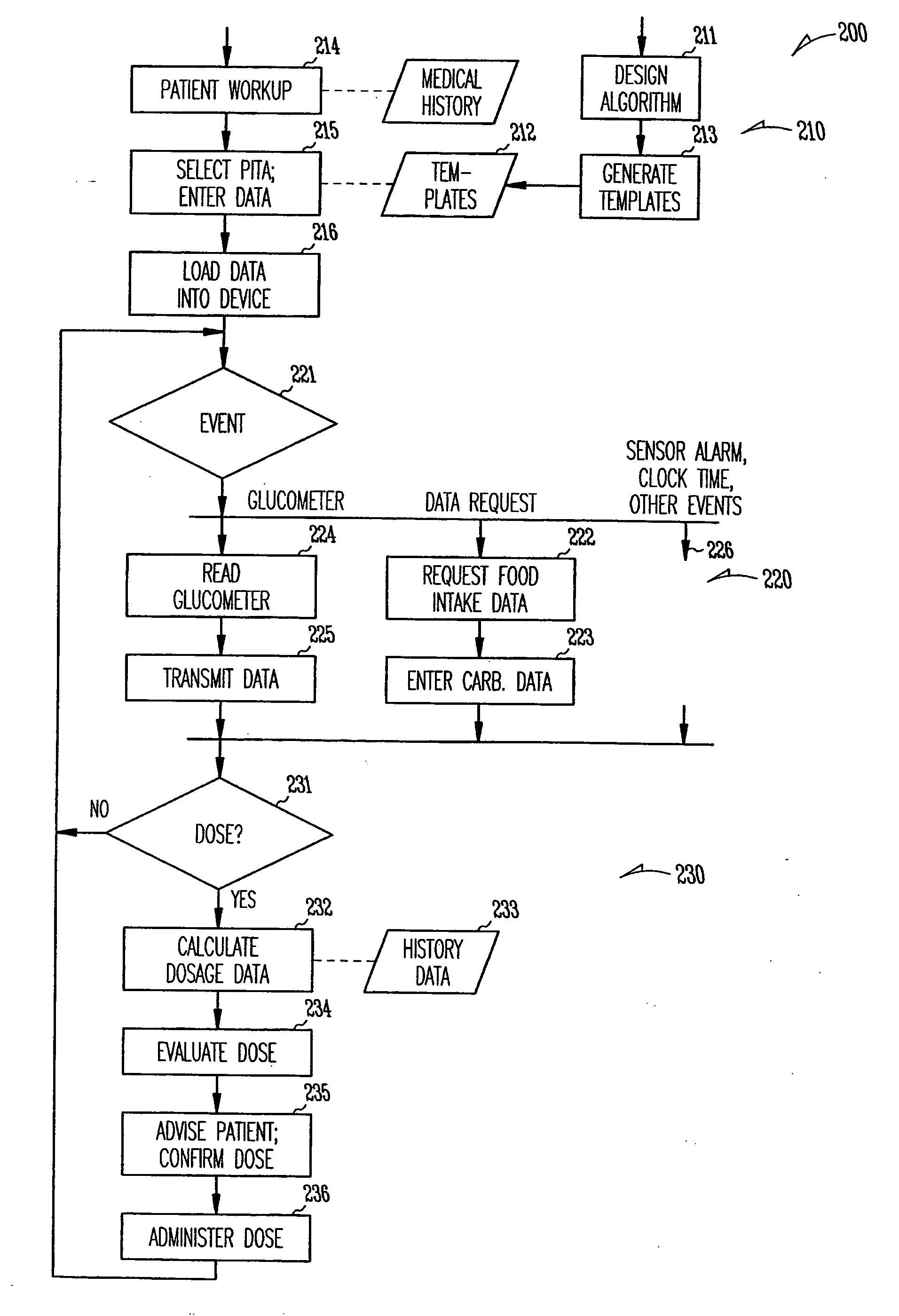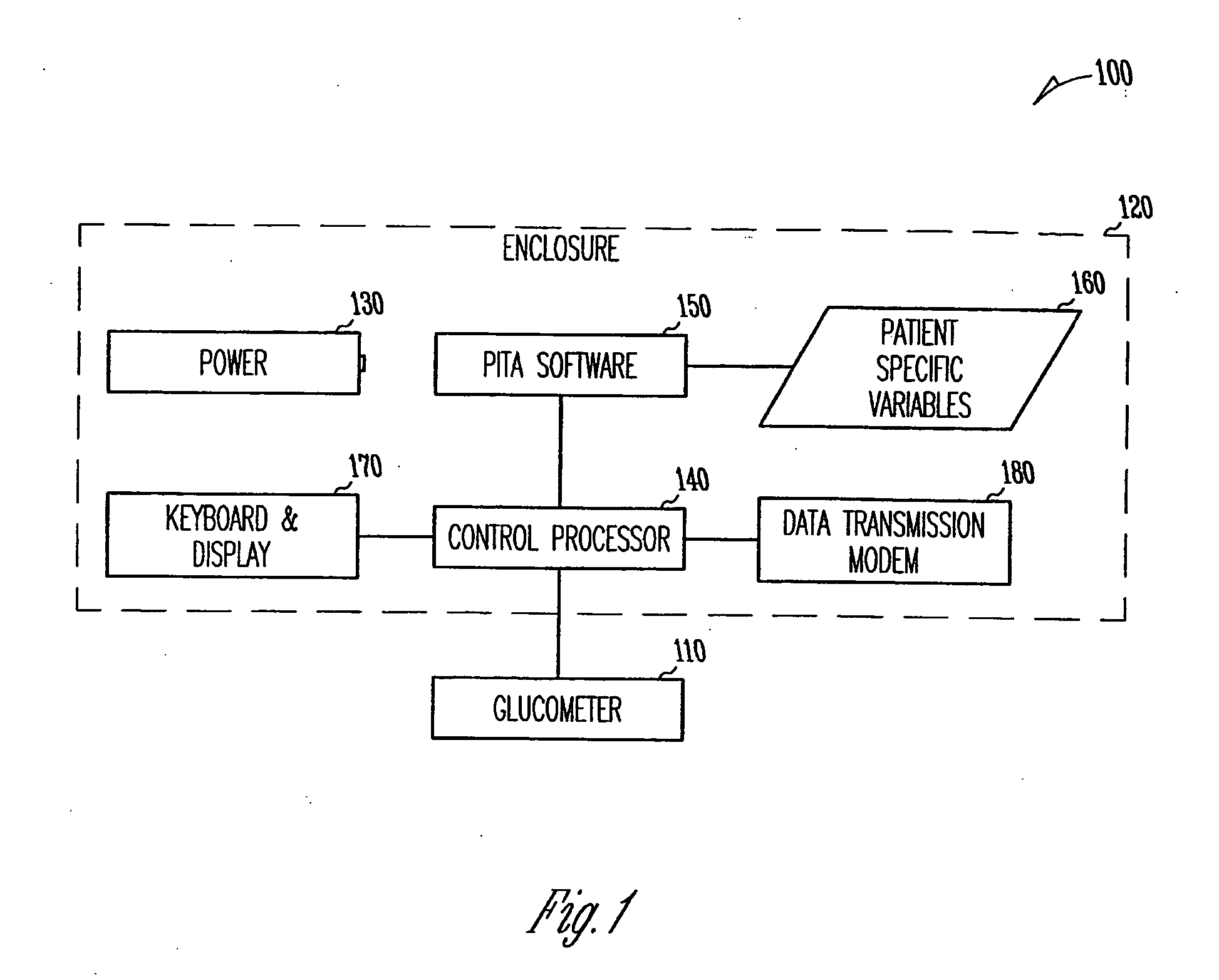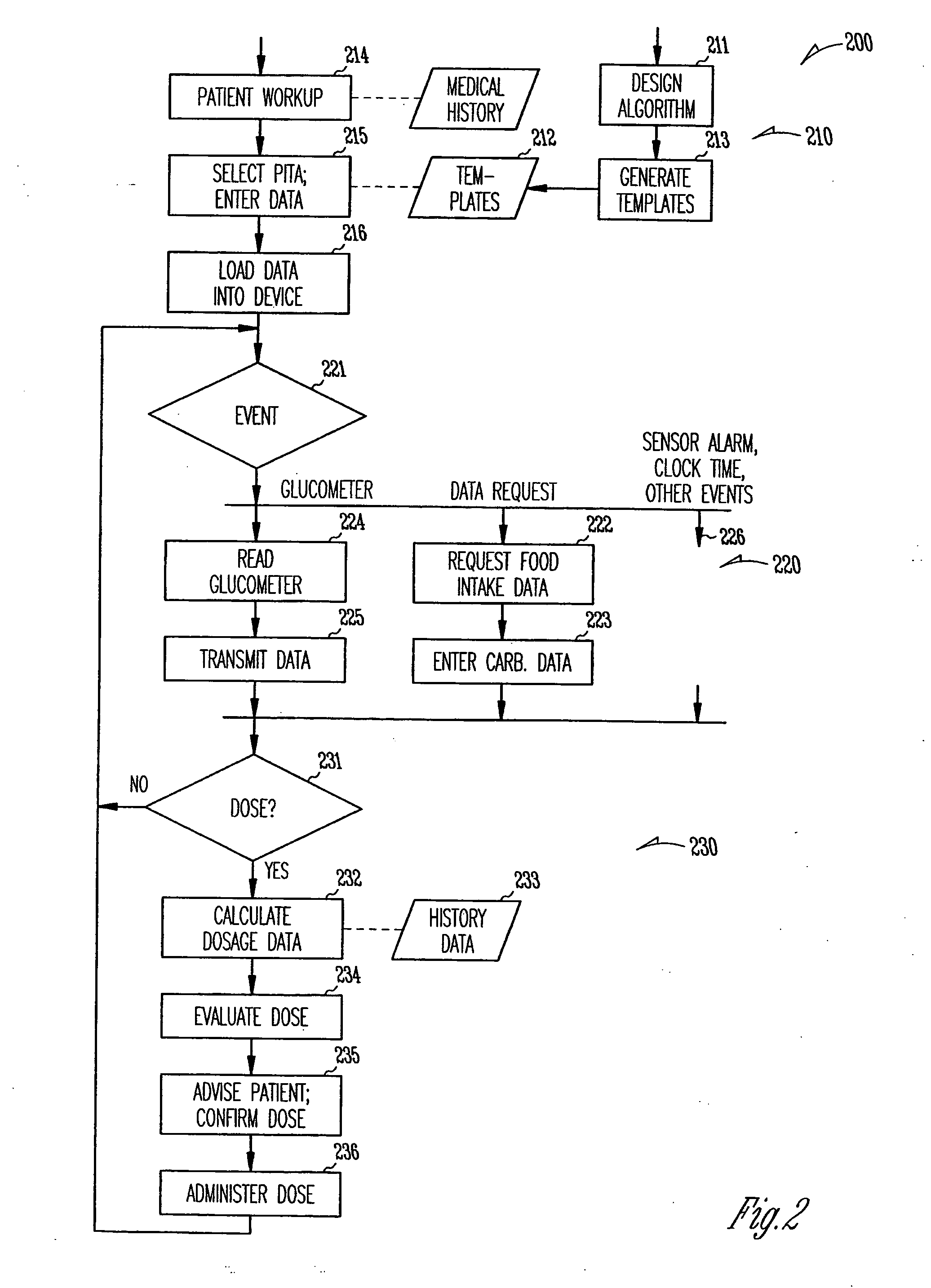Patient management of diabetes treatment
a diabetes and patient technology, applied in the field of diabetes patient management, can solve the problems of many patients being burdened, doctors and other professional health care personnel cannot provide the day-to-day care, and unable to meet patients' needs
- Summary
- Abstract
- Description
- Claims
- Application Information
AI Technical Summary
Benefits of technology
Problems solved by technology
Method used
Image
Examples
Embodiment Construction
[0014]FIG. 1 illustrates a portable device 100 for realizing one form of the invention using a personalized management plan employing an insulin treatment algorithm (PITA). One type of PITA is called functional insulin treatment (FIT); this description may employ both terms.
[0015] Device 100 assists in treating and managing diabetes. The device is a handheld electronic device about the size of a personal digital assistant or a cellular telephone. The device integrates the following functions.
[0016] Device 100 measures, displays and stores the level of the patient's blood glucose. Components that perform this function, i.e., glucose meters 110, are readily available in the marketplace. The device could incorporate existing glucometer technology. Currently available glucose meters offer a function which records and graphs the glucose data generated. The glucometer could be an integral part of the device, or it could be a separate product that plugs into the device, for example in a ...
PUM
| Property | Measurement | Unit |
|---|---|---|
| time | aaaaa | aaaaa |
| physical exertion | aaaaa | aaaaa |
| physical | aaaaa | aaaaa |
Abstract
Description
Claims
Application Information
 Login to View More
Login to View More - R&D
- Intellectual Property
- Life Sciences
- Materials
- Tech Scout
- Unparalleled Data Quality
- Higher Quality Content
- 60% Fewer Hallucinations
Browse by: Latest US Patents, China's latest patents, Technical Efficacy Thesaurus, Application Domain, Technology Topic, Popular Technical Reports.
© 2025 PatSnap. All rights reserved.Legal|Privacy policy|Modern Slavery Act Transparency Statement|Sitemap|About US| Contact US: help@patsnap.com



